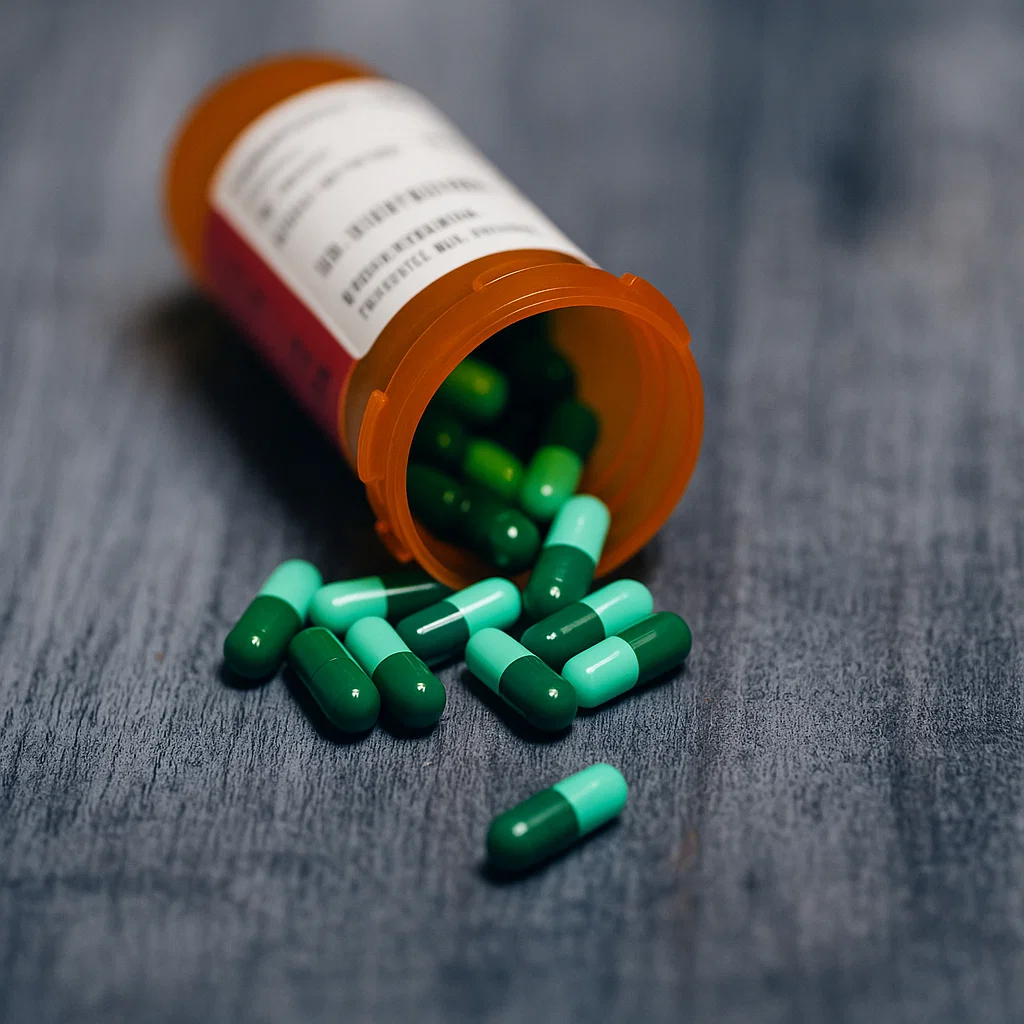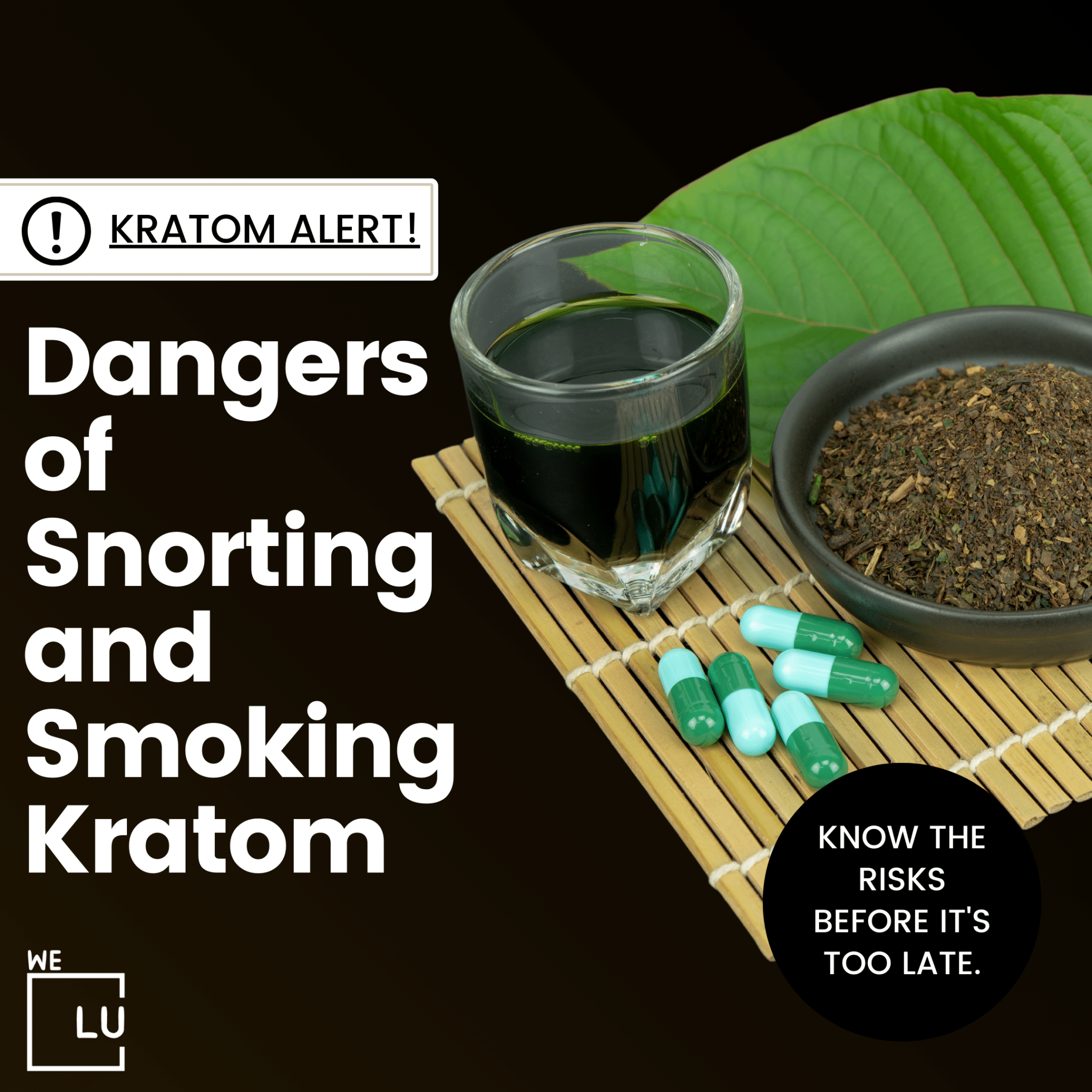What Is Tramadol?
Tramadol is a prescription medication used to treat moderate to moderately severe pain. It belongs to the class of drugs known as opioid analgesics. The dosage of tramadol can vary based on individual factors such as the severity of pain, medical history, and response to the medication. It’s important to follow your doctor’s instructions and take the medication only as prescribed.
What Is The Dosage Of Tramadol?
Typically, tramadol is available in immediate-release (IR) and extended-release (ER) formulations. The immediate-release tablets are often taken every 4 to 6 hours as needed for pain, while the extended-release tablets are taken once or twice daily. Dosages may be adjusted by your doctor based on your specific situation.
| Tramadol Formulation | Dosage Guidelines | Maximum Daily Dose |
|---|---|---|
| Immediate-Release (IR) | – Initial dose: 25 mg to 50 mg every 4 to 6 hours as needed. | 400 mg per day |
| – Maximum dose: 400 mg per day. | ||
| Extended-Release (ER) | – Typical starting dose: 100 mg once daily. | 300 mg per da |
Tramadol Dosage For Chronic Pain
Oral Dosage Form (Extended-Release Capsules):
- Adults:
- Initial dose: 100 mg once a day.
- Your doctor may increase your dose as needed.
- Maximum dose: Usually not more than 300 mg per day.
- Children 12 years and older: Your doctor must determine the use and dose.
- Children younger than 12 years: Not recommended.
Oral Dosage Form (Extended-Release Tablets):
- Adults:
- Initial dose: 100 mg once a day.
- Your doctor may increase your dose as needed.
- Maximum dose: Usually not more than 300 mg per day.
- Children: Use and dose must be determined by your doctor.
Tramadol Dosage For Moderate to Severe Pain
Oral Dosage Form (Solution):
- Adults:
- Initial dose: 25 mg once a day.
- Your doctor may increase your dose as needed.
- Maximum dose: Usually not more than 400 mg per day.
- Children younger than 12 years: Not recommended.
Oral Dosage Form (Tablets):
- Adults:
- Initial dose: 25 mg per day, taken every morning.
- Your doctor may increase your dose as needed and tolerated.
- Maximum dose: Usually not more than 400 mg per day.
- Older adults over 75 years:
- Initial dose: 25 mg per day, taken every morning.
- Your doctor may increase your dose as needed and tolerated.
- Maximum dose: Usually not more than 300 mg per day.
- Children 12 years and older: Your doctor must determine the use and dose.
- Children younger than 12 years: Not recommended.
Always follow your healthcare provider’s specific instructions and consult them for any concerns or adjustments to your medication.

Skip To:
Learn More:
- How Long Does Tramadol Last? What is the Tramadol Half Life?
- Is Tramadol Addictive? Risks & Signs Of Tramadol Addiction
- Tramadol Withdrawal Symptoms, Timeline, And Detox
- Tramadol Detox, Specifics, Statistics, Symptoms, Withdrawal, Warnings & Treatment Options
- Tramadol Interactions, Types, Risk Factors & Side Effects
- Can You Mix Tramadol And Alcohol? Side Effects And Dangers.
- Toradol Vs Tramadol. Uses, Side Effects, And Warnings
- Tramadol Vs Oxycodone, Comparison Of Side Effects & Efficacy
- Can You Snort Tramadol? Signs, Side Effects, & Treatment
What Happens If You Miss A Dose?
If you miss a dose of tramadol, take the missed dose as soon as you remember. However, if it is almost time for your next scheduled dose, skip the missed dose and resume your regular dosing schedule. Do not double up on doses to make up for a missed one. Adhere to your prescribed dosing schedule to maintain a consistent level of medication in your system. Missing doses or taking extra doses may lead to suboptimal pain control or an increased risk of side effects.
Remember that tramadol is a prescription medication, and its use should be closely monitored by your healthcare professional. If you consistently find it difficult to adhere to your prescribed dosing schedule, discuss this with your doctor to explore potential solutions or adjustments to your treatment plan.

Get Your Life Back
Find Hope & Recovery. Get Safe Comfortable Detox, Addiction Rehab & Dual Diagnosis High-Quality Care.
Hotline (855) 695-1160What Is The Maximum Dosage For Tramadol?
The maximum dosage for tramadol can vary depending on the formulation (immediate-release or extended-release) and the specific medical condition being treated. Follow the prescribed dosage provided by your healthcare provider. Exceeding the recommended dosage can lead to serious side effects and increase the risk of adverse reactions.
- Immediate-Release Tramadol:
- The maximum recommended dosage is usually around 400 mg per day for adults.
- Dosages for children are determined by the doctor based on individual factors.
- Extended-Release Tramadol: The maximum recommended dosage is often limited to 300 mg daily for adults.
These are general guidelines, and your doctor may adjust the dosage based on your medical condition, medication response, and other factors. Report any side effects or concerns to your healthcare provider and never self-adjust your tramadol dosage without consulting them first. Additionally, tramadol carries a risk of dependence and addiction, so it’s crucial to use it exactly as prescribed by your healthcare professional.
Get Help. Get Better. Get Your Life Back.
Searching for an Accredited Drug and Alcohol Rehab Centers in Near You?
Even if you have failed previously and relapsed, or are in the middle of a difficult crisis, we stand ready to support you. Our trusted behavioral health specialists will not give up on you. When you feel ready or just want someone to speak to about therapy alternatives to change your life call us. Even if we cannot assist you, we will lead you to wherever you can get support. There is no obligation. Call our hotline today.
FREE Addiction Hotline – Call 24/7
Can You Overdose On Tramadol?
It is possible to overdose on tramadol. Tramadol is an opioid analgesic, and like other opioids, an overdose can have severe and potentially life-threatening consequences. Overdose symptoms may include difficulty breathing, extreme drowsiness, unconsciousness, or seizures.
Factors that can increase the risk of overdose on tramadol include:
- Taking High Doses: Taking more tramadol than prescribed or recommended can increase the risk of overdose.
- Combining with Other Substances: Taking tramadol in combination with other substances, especially alcohol or other central nervous system depressants, can increase the risk of overdose.
- Individual Sensitivity: Some individuals may be more sensitive to opioids, and a dose that is safe for one person may be too much for another.
- Medical Conditions: Certain medical conditions, such as respiratory problems or liver disease, can increase the risk of complications and overdose.
If you suspect an overdose or experience symptoms such as difficulty breathing, extreme drowsiness, or seizures, seek emergency medical attention immediately.
Take tramadol only as prescribed by your healthcare provider and inform them of any other medications or substances you are taking. Consult your healthcare professional for guidance if you have concerns about your medication or experience side effects. Additionally, if you or someone you know is struggling with substance abuse or opioid dependence, seek help from a healthcare provider or addiction specialist.
Comfortable Facilities & Amenities
High-Quality Addiction & Mental Health Rehabilitation Treatment
Rehab Centers TourRenowned California Addiction Center. Serene Private Facilities. Inpatient rehab programs vary.
Addiction Helpline (855) 695-1160Proven recovery success experience, backed by a Team w/ History of:
15+
Years of Unified Experience
100s
5-Star Reviews Across Our Centers
10K
Recovery Success Stories Across Our Network
- Low Patient to Therapist Ratio
- Onsite Medical Detox Center
- Comprehensive Dual-Diagnosis Treatment
- Complimentary Family & Alumni Programs
- Coaching, Recovery & Personal Development Events
Tramadol Overdose Symptoms
An overdose of tramadol can lead to severe and potentially life-threatening symptoms. If you suspect an overdose or if someone is exhibiting signs of overdose, seek emergency medical attention immediately.
- Difficulty Breathing: Tramadol, like other opioids, can depress the respiratory system. An overdose may lead to slowed or shallow breathing, making it difficult for the person to get enough oxygen. In severe cases, respiratory failure can occur.
- Extreme Drowsiness: Overdosing on tramadol can cause profound drowsiness or sedation. The individual may become excessively sleepy and lethargic, and it may be challenging to keep them awake.
- Confusion: Tramadol overdose can result in mental confusion, disorientation, or difficulty concentrating. The person may have trouble understanding their surroundings or responding appropriately to stimuli.
- Seizures: Seizures are a severe complication of tramadol overdose. The drug lowers the seizure threshold, and high doses or overdose can trigger seizures, which may be life-threatening.
- Cold and Clammy Skin: Overdosing tramadol can lead to skin temperature and moisture changes. The skin may feel cold and clammy, indicating poor blood circulation and potential cardiovascular effects.
- Weakness: Severe weakness or a lack of muscle coordination may be evident during a tramadol overdose. This weakness can extend to the entire body, making it difficult for the person to move or stand.
- Unconsciousness: In the most severe cases, tramadol overdose can lead to loss of consciousness or coma. The person may be unresponsive and unable to be awakened.
Tramadol should be taken only as prescribed by a healthcare professional. If an overdose is suspected, it is a medical emergency, and immediate attention from healthcare providers is necessary. Prompt intervention can help reverse the effects of the overdose and prevent severe complications. If you or someone you know may have taken too much tramadol and is exhibiting these symptoms, call emergency services immediately.

Tramadol Overdose Treatment
If you suspect an overdose, there are a few things you can do. A Tramadol overdose is a severe medical emergency; swift and decisive action can be the difference that saves a life.
- Emergency Medical Attention: Call emergency services (911 in the United States or the appropriate emergency number in your region) immediately.
- Stabilization: Emergency medical personnel will work to stabilize the individual’s condition, ensuring that vital signs such as heart rate, blood pressure, and breathing are maintained.
- Activated Charcoal: In some cases, activated charcoal may be administered to help absorb the tramadol and prevent its further absorption into the bloodstream.
- Naloxone Administration: Naloxone is an opioid receptor antagonist that can reverse the effects of opioid overdose, including respiratory depression. While naloxone is not always practical for tramadol overdose, it may be considered in certain situations.
- Ventilation Support: In severe cases where respiratory depression is a concern, mechanical ventilation may be necessary to assist with breathing.
- Seizure Management: If seizures are present or occur, antiepileptic medications may be administered to control and prevent further seizures.
- Monitoring: Continuous monitoring of vital signs and overall medical status is essential. Sometimes, the individual may need to be admitted to an intensive care unit for close observation and management.
Specific treatment approaches may vary based on the severity of the overdose, the individual’s overall health, and other factors. The primary goal is to provide immediate and appropriate medical care to address the symptoms and complications of the overdose.
World-class, Accredited, 5-Star Reviewed, Effective Addiction & Mental Health Programs. Complete Behavioral Health Inpatient Rehab, Detox plus Co-occuring Disorders Therapy.
CALL (855) 695-1160End the Addiction Pain. End the Emotional Rollercoaster. Get Your Life Back. Start Drug, Alcohol & Dual Diagnosis Mental Health Treatment Now. Get Free No-obligation Guidance by Substance Abuse Specialists Who Understand Addiction & Mental Health Recovery & Know How to Help.

Risks Of Using Tramadol
Tramadol is an opioid analgesic prescribed to manage moderate to severe pain. While it can effectively relieve pain, several risks are associated with its use.
- Addiction and Dependence:
Tramadol, like other opioids, has the potential for abuse, addiction, and physical dependence. Prolonged use or misuse of tramadol can lead to the development of tolerance, where higher doses are needed to achieve the same pain-relieving effect, and dependence, where the body becomes accustomed to the presence of the drug. - Withdrawal Symptoms:
Abruptly stopping tramadol after prolonged use can lead to withdrawal symptoms, which may include anxiety, insomnia, sweating, nausea, and muscle aches. These symptoms can be uncomfortable and challenging to manage without medical supervision. - Respiratory Depression:
Opioids, including tramadol, can suppress the respiratory system, leading to slowed or shallow breathing. In high doses or cases of overdose, severe respiratory depression can occur, posing a risk to life. - Seizures:
Tramadol lowers the seizure threshold, and at higher doses, it can increase the risk of seizures. Individuals with a history of seizures or those taking medications that lower the seizure threshold may be at an elevated risk. - Serotonin Syndrome:
Tramadol can increase serotonin levels in the brain. When combined with other medications that also affect serotonin, it may lead to a potentially life-threatening condition known as serotonin syndrome. Symptoms include agitation, hallucinations, rapid heartbeat, fever, muscle stiffness, and loss of coordination. - Gastrointestinal Effects:
Tramadol can cause gastrointestinal side effects such as nausea, vomiting, constipation, and stomach upset. Prolonged use may increase the risk of gastrointestinal bleeding and ulcers. - Interactions with Other Medications:
Tramadol can interact with various medications, including other opioids, sedatives, antidepressants, and certain medications used to treat psychiatric disorders. These interactions can lead to adverse effects, including respiratory depression and increased sedation. - Individual Variation in Metabolism:
The metabolism of tramadol varies among individuals. Some people metabolize the drug more quickly, while others may metabolize it more slowly, leading to variations in the drug’s effectiveness and the risk of side effects. - Renal and Hepatic Impairment:
Individuals with impaired kidney or liver function may be at an increased risk of experiencing adverse effects from tramadol. Dose adjustments may be necessary to avoid toxicity in individuals with compromised renal or hepatic function. - Misuse and Overdose:
Intentional or unintentional misuse of tramadol can lead to overdose. Symptoms of overdose include difficulty breathing, extreme drowsiness, seizures, and, in severe cases, unconsciousness. Tramadol overdose requires immediate medical attention.
While tramadol can be an effective pain management option, it is not without risks. Healthcare providers should assess each patient’s medical history carefully, consider potential drug interactions, and monitor for signs of misuse. Patients, in turn, should communicate openly with their healthcare providers about their pain management, adhere to prescribed dosages, and be aware of the potential risks associated with tramadol use. The goal is to achieve pain relief while minimizing the risks of adverse effects and complications associated with this opioid medication.
Experience Transformative Recovery at the We Level Up California Treatment Center.
See our authentic success stories. Get inspired. Get the help you deserve.



Start a New Life
Begin with a free call to an addiction & behavioral health treatment advisor. Learn more about our dual-diagnosis programs. The We Level Up treatment center network delivers recovery programs that vary by each treatment facility. Call to learn more.
- Personalized Care
- Caring Accountable Staff
- World-class Amenities
- Licensed & Accredited
- Renowned w/ 100s 5-Star Reviews
We’ll Call You
Joey’s Opiates Alcohol Drugs Addiction Recovery Story After Death of His Son at 26 From Fentanyl OD
Search We Level Up CA Tramadol Dosage, Drug & Alcohol Rehab / Detox & Mental Health Topics & Resources
Sources
- Dhesi M, Maldonado KA, Maani CV. Tramadol. [Updated 2023 Apr 16]. In: StatPearls [Internet]. Treasure Island (FL): StatPearls Publishing; 2023 Jan-. Available from: https://www.ncbi.nlm.nih.gov/books/NBK537060/ read more: tramadol dosage, what is the dosage of tramadol, dosing for tramadol, dosing of tramadol, what are the doses of tramadol, maximum dose tramadol, max dosage tramadol, dosages of tramadol, highest dose of tramadol, high dose tramadol,
- Medline Plus – Tramadol – https://medlineplus.gov/druginfo/meds/a695011.html
- Sidana A, Domun I, Arora P. Tramadol withdrawal psychosis. Indian J Psychiatry. 2019 Nov-Dec;61(6):655-656. doi: 10.4103/psychiatry.IndianJPsychiatry_11_19. PMID: 31896879; PMCID: PMC6862981. https://www.ncbi.nlm.nih.gov/pmc/articles/PMC6862981/
- Cohen B, Ruth LJ, Preuss CV. Opioid Analgesics. [Updated 2023 Apr 29]. In: StatPearls [Internet]. Treasure Island (FL): StatPearls Publishing; 2023 Jan-. Available from: https://www.ncbi.nlm.nih.gov/books/NBK459161/
- Chou R, Hartung D, Turner J, et al. Opioid Treatments for Chronic Pain [Internet]. Rockville (MD): Agency for Healthcare Research and Quality (US); 2020 Apr. (Comparative Effectiveness Review, No. 229.) Available from: https://www.ncbi.nlm.nih.gov/books/NBK556253/
- National Academies of Sciences, Engineering, and Medicine; Health and Medicine Division; Board on Health Sciences Policy; Committee on Pain Management and Regulatory Strategies to Address Prescription Opioid Abuse; Phillips JK, Ford MA, Bonnie RJ, editors. Pain Management and the Opioid Epidemic: Balancing Societal and Individual Benefits and Risks of Prescription Opioid Use. Washington (DC): National Academies Press (US); 2017 Jul 13. Available from: https://www.ncbi.nlm.nih.gov/books/NBK458660/ doi: 10.17226/24781
- Zullo AR, Danko KJ, Moyo P, et al. Prevention, Diagnosis, and Management of Opioids, Opioid Misuse, and Opioid Use Disorder in Older Adults [Internet]. Rockville (MD): Agency for Healthcare Research and Quality (US); 2020 Nov. (Technical Brief, No. 37.) Available from: https://www.ncbi.nlm.nih.gov/books/NBK564144/
- Rajabizadeh G, Kheradmand A, Nasirian M. Psychosis following Tramadol Withdrawal. Addict Health. 2009 Summer;1(1):58-61. PMID: 24494084; PMCID: PMC3905496. https://www.ncbi.nlm.nih.gov/pmc/articles/PMC3905496/
- Kleber HD. Pharmacologic treatments for opioid dependence: detoxification and maintenance options. Dialogues Clin Neurosci. 2007;9(4):455-70. doi: 10.31887/DCNS.2007.9.2/hkleber. PMID: 18286804; PMCID: PMC3202507. https://www.ncbi.nlm.nih.gov/pmc/articles/PMC3202507/
- Sansone RA, Sansone LA. Tramadol: seizures, serotonin syndrome, and coadministered antidepressants. Psychiatry (Edgmont). 2009 Apr;6(4):17-21. PMID: 19724727; PMCID: PMC2714818. https://www.ncbi.nlm.nih.gov/pmc/articles/PMC2714818/




